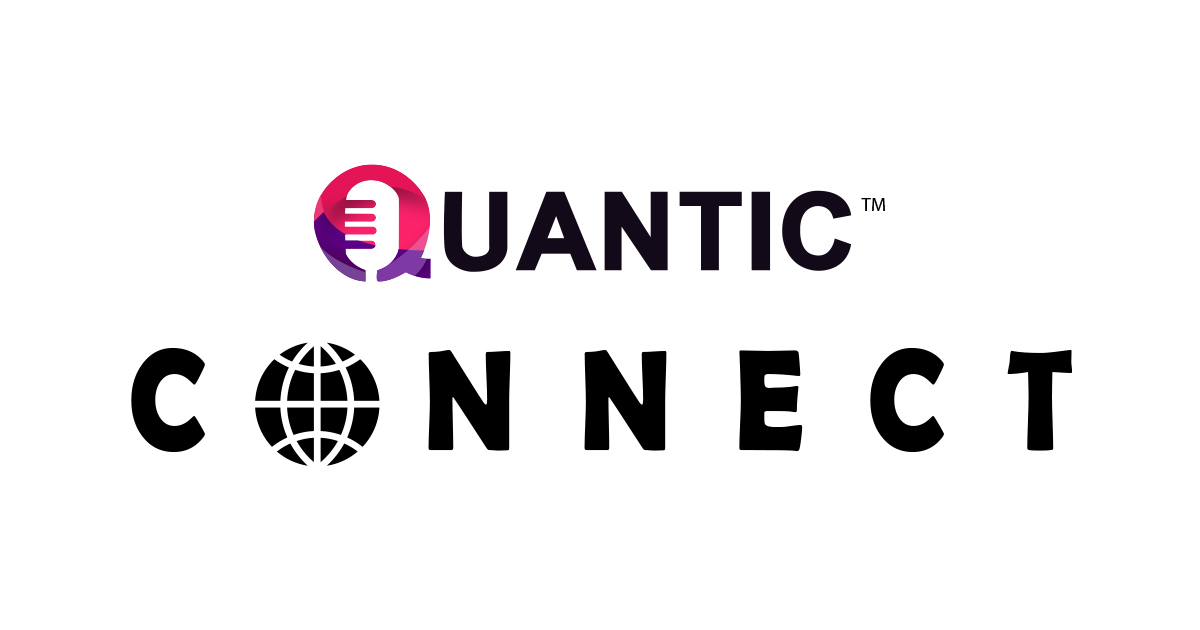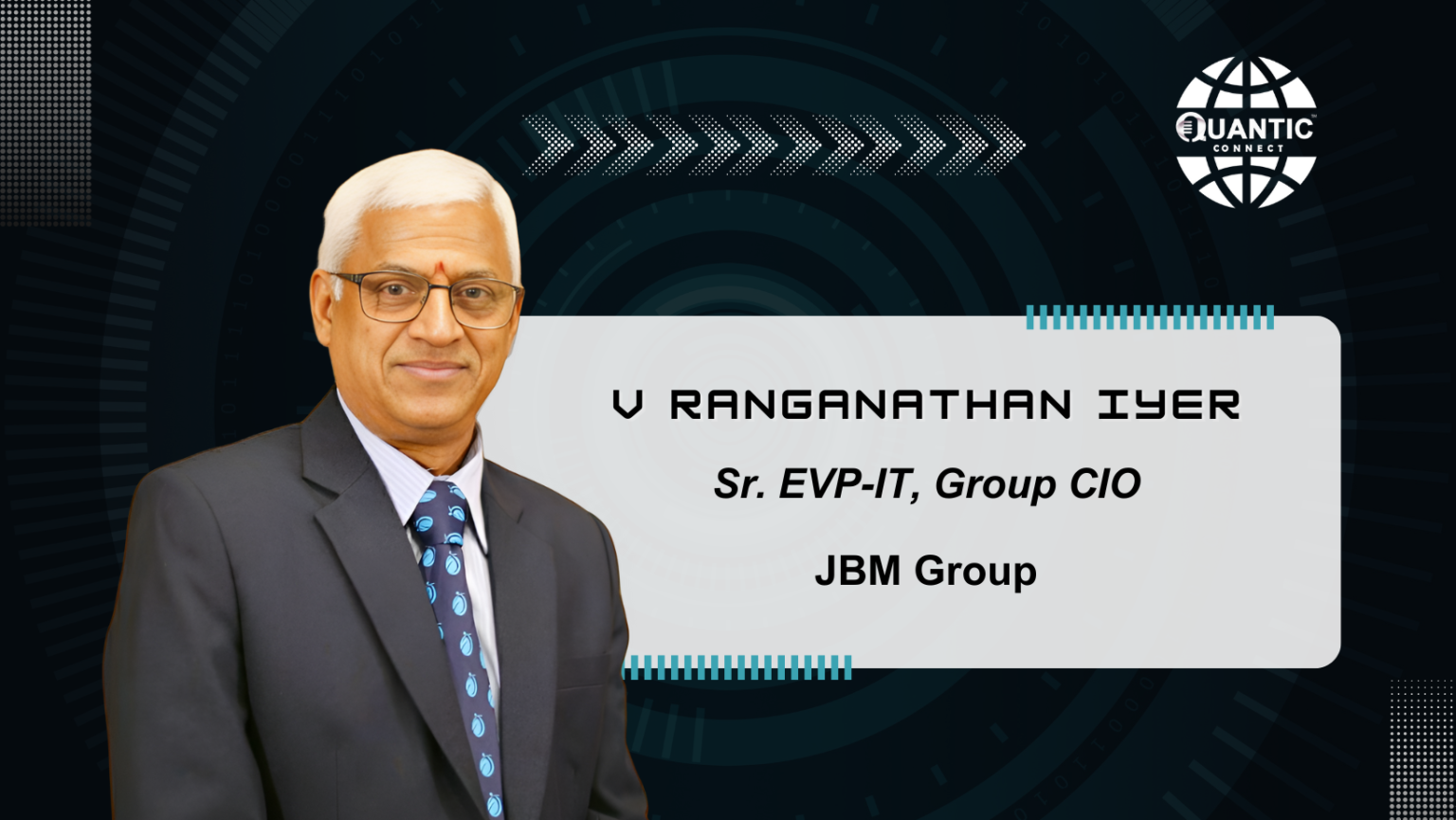Mumbai, 21st May: In an era dominated by digital transformation, the seamless integration of Information Technology (IT) and Operational Technology (OT) has emerged as a cornerstone for business success. Addressing diverse business challenges necessitates innovative strategies that not only align with organizational objectives but also enhance process efficiency, quality, and cost-effectiveness. Drawing from practical examples across various domains, this article delves into the intricacies of bridging the gap between IT and OT to achieve tangible business outcomes.
Join Mr. Ranganathan Vaidyanathan, Sr. EVP- IT, Group CIO, at JBM Group in conversation with Mr. Marquis Fernandes, who spearheads the India Business at Quantic India, as they explore how IT and OT merge in contemporary business strategies. From Weighbridge Automation to enhancing traceability in manufacturing processes, each case study underscores the pivotal role of technology deployment in driving operational excellence. Deployed solutions for 6S (Safety), 12P (12 Pillar) & ESG to harness digitization for business excellence.
With over 30 years of strategic expertise, Mr. V Ranganathan Iyer specialises in designing and implementing innovative solutions tailored to meet diverse business needs while aligning with overarching goals. A visionary in digital strategy, particularly within the realms of IT and OT convergence, he has a proven track record of identifying and integrating cutting-edge technologies to optimize operations and mitigate business challenges. With two decades of leadership experience, he excels in leveraging IT for process enhancement with a pragmatic approach.
Can you provide an example of a project where you successfully aligned IT and OT to achieve business objectives, and the technologies or methodologies used in the implementation?
Weighbridge Automation
- The business pain point was the need to optimise the TAT (Turn Around Time) of trucks and digitize the process to eliminate manual data collection from the weighbridge to ensure accurate and timely data captured every time right.
- A custom solution developed within the SAP environment eliminates the need for human intervention at the weighbridge. The entire process of goods receipt and customer billing is automated seamlessly.
- We have implemented RFID based solution, with high resolution cameras, and sensors at our site to enhance the efficiency of truck movements. This solution has been horizontally deployed across our entire group, optimizing operations consistently.
Traceability of manufactured products.
- The business pain point was addressing customer rejection. How quickly we identify and respond to customer was the key. This information includes the billing date, manufacturing date, shift and production line details, as well as a breakdown of materials supplied by different suppliers used in manufacturing process, all in a timely manner.
- To achieve this, we leveraged SAP functionalities, developed specific processes with the customer, and implemented Standard Operating Procedures (SOPs) for suppliers involved in procurement, stores responsible for receiving goods, and manufacturing teams to ensure disciplined operations leading up to customer billing.
- Once implemented, end-users can retrieve detailed information about goods, including manufacturing date, shift, production line, and specific supplier goods consumed, in less than a minute.
- We can implement a barcode system strategically to achieve desired business outcomes. This system is deployed horizontally across plants where such requirements are crucial for customer satisfaction.
Digitization for auditing process & ESG
- We enhanced our business excellence by implementing mobility-based 6S and 12 Pillar audit systems. This upgrade increased audit process efficiency by enabling real-time data collection and evidence capture during audits, thereby eliminating the need for post-audit data compilation.
- ESG is a board-level topic, requiring data collection from various business locations. By digitizing this process, we can gather real-time data and conduct regular reviews. This enables us to derive the ESG score which is reviewed on a monthly basis and reported to the board on quarterly basis.
Digital strategy is crucial for modern businesses. Can you discuss your approach to conceptualizing and implementing digital strategies, particularly in the context of diverse business requirements?
- Developing a digital strategy is crucial for contemporary businesses, it has to be tailored to specific needs and goals. As it is relative, let’s break this down into three key categories:
- In new digitally-native businesses, the design and deployment often incorporate state-of-the-art technologies, positioning them as leaders in their field. The more these technologies are adopted, the more relevant and competitive the business becomes.
- The second type of business is eager to adopt digital technology in an environment where there is a strong appetite for digital solutions. Embracing digital adaptation in such a context can help the business become a market leader and stay relevant.
- Thirdly, in this legacy system scenario, we encounter numerous challenges due to aging assets, longstanding processes, and experienced personnel with diverse mindsets. To address these business pain points, we implement digital interventions to realize immediate benefits. This approach not only enables resource optimization but also empowers teams to explore new digital initiatives aligned with their goals. Management is also wanted to embrace “digital as the manpower” cost is steadily increasing and skilled manpower is very difficult to get.
Can you share your strategy for identifying and addressing complex business challenges, and how technology deployment contributes to process efficiency, quality improvement, and cost reduction?
- When faced with complex business challenges, it’s crucial to leverage technology effectively to drive improvements. Take quality improvement, for instance:
- This is a very technical job and this varies product to product. One such resource labelled as highly skilled and technically sound person.
- Non availability of this resources will hamper customer satisfaction.
- Dependency of this resource is very high. As this resource is human, ensuring consistent product quality checks are questionable.
- Implementing visual analytics for quality helps sustaining accuracy. This also reduces or eliminates reliance on human resources in certain situations.
- Reducing or eliminating the need for highly skilled resources reduces process inefficiencies and indirectly lowers quality-related costs.
- Likewise we can reduce the business challenges like automated data collection for number of products produced, bring in right kind of notification to person responsible when the asset goes beyond acceptable range of values for any different parameters suggest by asset manufacturer etc.
- Similarly, we can address business challenges by automating data collection for product counts and implementing notifications for responsible personnel when the asset goes beyond acceptable range of values for any different parameters suggested by asset manufacturer etc.
- By deploying ChatBot for HR, we can enable employee self-service options for many HR processes.
- We have implemented an in-house developed facial recognition attendance system that provides input to our production planning engine. This system informs our planners about the presence of highly skilled employees essential for manufacturing on the floor, without the need for physical monitoring of resources.
Managing complex business challenges using technology requires a pragmatic approach. Can you share your strategy for identifying and addressing complex business challenges, and how technology deployment contributes to process efficiency, quality improvement, and cost reduction?
Identifying business challenges
- Firstly, understand business pain point.
- Secondly, Identify the repercussions of the business pain, considering its effects on customers, suppliers, and employees, as well as its impact on both top-line and bottom-line performance. Determine the potential improvements that solving this pain point could bring, such as enhanced processes, optimized asset performance, increased employee efficiency and productivity, improved product quality, or reduced machine downtime.
- Now, find a short-term solution to alleviate the pain and then develop a mid/long-term strategy for a permanent resolution. The mid/long term plan will likely require customer approvals due to potential infrastructure changes.
- There are instances you cannot eliminate the pain 100% due to outdated assets or processes adapted for such equipment. It’s essential to analyze the facts and clearly communicate these constraints to decision-makers for informed choices.
- Explore digital and technological interventions based on the identified pain points. Conduct proof of concept (POC) projects with calculated return on investment (ROI) metrics to measure effectiveness post-deployment.
Can you discuss your approach to leadership and team management, particularly in driving innovation and fostering a collaborative work environment?
- In our group, management operates with a clear direction. JBM has clear and concrete plan set for the next five years where we establish our objectives (what we wanted to achieve), assess current resources (what we have), identify what is needed to achieve our goals, and create a detailed plan accordingly.
- Our management has provided clear direction to prioritize Technology, Innovation, and People. Innovation cannot happen without people and technology.
- We regularly host Technology Days focused on various business aspects, inviting industry leaders to showcase the latest developments. This initiative offers us an external perspective on global advancements in our field.
- We engage with the start-up ecosystem to showcase their capabilities, learning to think differently and providing them with specific business pain points to resolve. This helps us to explore more innovative solutions.
- The most beneficial aspect of this entire process is that management regularly reviews our progress, provides guidance, and ensures that solutions are getting deployed. This contributes greatly to the company’s growth.
To know more about us / publish your article, reach us at
www.quanticindia.com
marquis@quanticindia.com.



